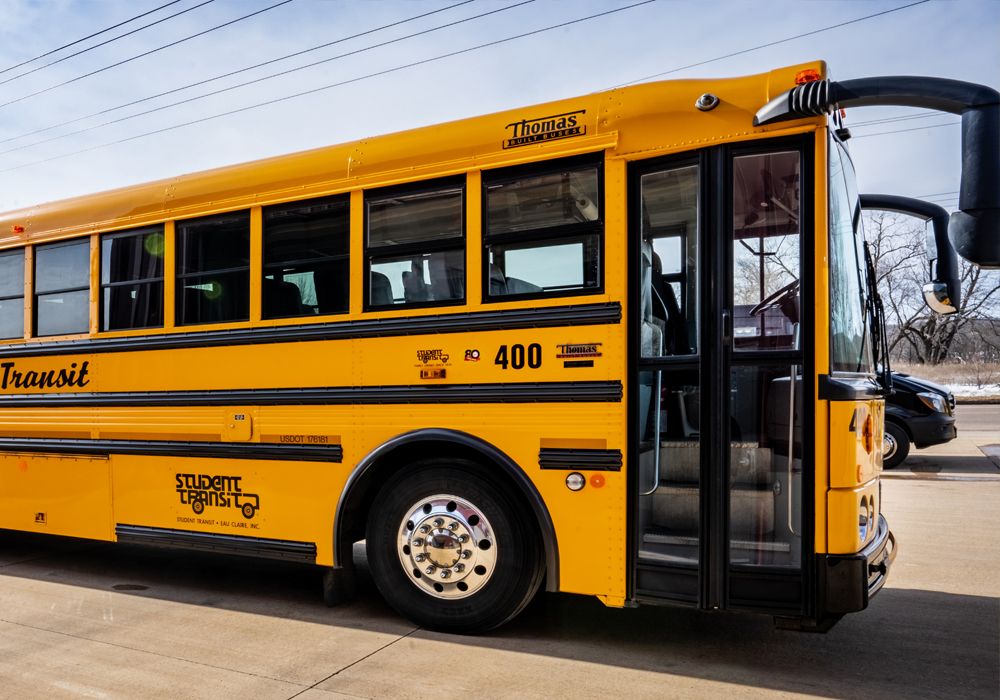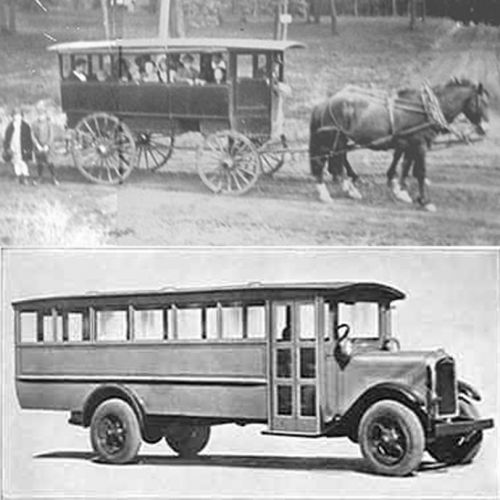|
|||
When thinking about ways to get your children to school, have you ever considered the option of a horse-drawn wagon?While this first version of a school bus may not be used often today, it was the starting point for the extremely useful type of automobile that is frequently utilized for student transportation today. While your grandfather may have "walked uphill both ways in the middle of a snowstorm" every day to get to school, the invention of the school bus has thankfully saved decades of children from the same fate. Let's take a look at how buses have evolved (and gotten increasingly safer) over the past century and a half. 
From Horse Power to Horsepower The first iteration of a school bus was a far cry from the big yellow automobiles we know today. In the late 19th century, horse-drawn wagons with bench-style seating transported children to and from school. These "kid hacks," as people called them, were not utilized by everyone but were seen as the start of a new mode of mass transportation. As more and more cars began showing up on the roads in the early 20th century, the wagons were upgraded to include more seating areas and be driven without horses. Eventually, school buses became more defined vehicles when manufacturer Wayne Works introduced the first all-steel body design that offered more safety features and protection from the weather. Turning Yellow As the popularity of school buses grew, so did parents' concern for their children's safety. In 1939, Dr. Frank Cyr led a conference at the University of Manhattan where individuals gathered to discuss the standardization of these vehicles. The conference successfully helped create forty-four new standards for all operating school buses, such as seat arrangements and interior dimensions. Perhaps the most notable change was coloring the vehicles bright yellow to be seen in early morning and evening lighting easily. Thirty-five states immediately adopted this regulation, and later all fifty by 1974. The Safest Mode of Transportation By 1950, seven million children were transported to school by bus each year, making safety features increasingly more critical. Additional standards continued to become necessary to develop a vehicle that properly protected its young passengers. Using the design concept of compartmentalization, buses kept children safe without the use of seatbelts through extra-padded seats positioned closely together. Additionally, children are distanced from the windshield, seated above proximal vehicles and below the majority of the passenger windows, and have access to emergency exit points around the whole perimeter of the bus. Today, new federal regulations apply to all vehicles intended to carry eleven or more passengers to school-related activities. Over the decades, school buses have been an increasingly valuable tool to make attending school easier and more accessible for students. At Student Transit, we understand and advocate for safety standards to be enforced in these automobiles because we've been ensuring safe rides since 1939.
Sources: Kid Hacks, Wayne Bus, and 70s school bus |
|||
|
|||
|

